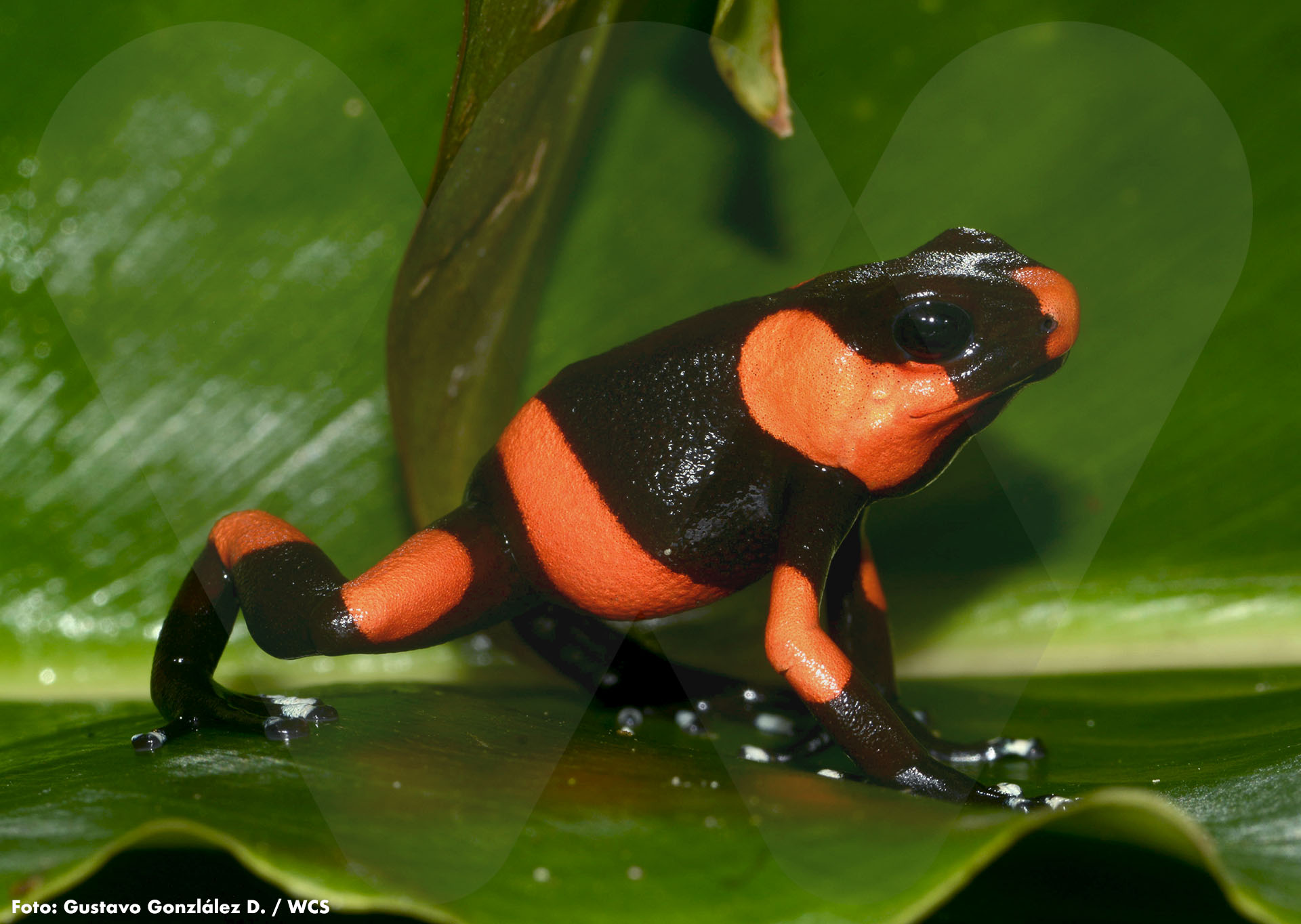A team researches one of them, called Oophaga lehmanni, to reproduce it in captivity and reintroduce it to its habitat. Physically attractive due to its vivid colors, it is one of the most trafficked species.

Amphibians are one of the most threatened groups of vertebrates in Colombia. Of the approximately 830 species reported to-date in the country, at least 230 (27.7 %) are included in the Red List of the International Union for Conservation of Nature (IUCN).
A support in the face of this diagnosis is the “Strategy for Amphibian Conservation” financed by the Zurich Zoo and led by the Cali Zoo and National Natural Parks, with the participation of WCS Colombia, an initiative that conducts monitoring, environmental education and conservation activities in the Farallones de Cali, Munchique, Tatamá, Selva de Florencia and Chingaza National Parks and in the Fauna and Flora Sanctuary Guanentá Alto Río Fonce.
And, as part of the activities of this strategy, the Cali Zoo and Amphibian Ark held a workshop on the need of amphibian conservation (the development of this workshop was supported by WCS Colombia), during which two species were selected for ex situ investigation and to contribute to the prevention of their extinction. These species are Oophaga lehmanni and Atelopus laetissimus.
For the life of an endemic frog
With Oophaga lehmanni, a Critically Endangered species, the aim is the consolidation of a conservation pilot ex situ (in captivity), led by the Cali Zoo, the Valle University and the Regional Autonomous Corporation of Valle del Cauca (CVC). Said pilot consists in the reproduction of some specimens in charge of the Zoo, in its facilities, to be subsequently released in their habitat to initiate a repopulation (supplementation), thus recuperating some populations decimated by traffickers.

This would be complemented by a study that can give certainty of the genetics of the specimens that will be reproduced and could be released, to avoid, among other problems, breeding between relatives (inbreeding).
The methodology in this case was defined in this manner because Oophaga lehmanni, a frog only living in Colombia (endemic to the country), is being affected not only by the destruction of its habitat, but also by intense trafficking, due to its vivid colors that make it very attractive for European collectors or owners of private aquariums.
For example, in April of 2019, in a confiscation of an illegal frog shipment in the ElDorado airport of Bogotá, of the 424 specimens that the traffickers planned to take out of the country illegally, half were O. lehmanni. Part of these confiscated frogs will now be used by the Cali Zoo for reproduction purposes.
Oophaga lehmanni is restricted to the Anchicayá River basin, in the Valle del Cauca, some populations living within the National Park Farallones de Cali. It is poisonous and very territorial; it usually fights to defend its range. It stands out mainly due to the combination, covering its entire body, of red and yellow or orange tones with black stripes and fingers decorated with white dots. This frog has an extraordinary characteristic: the female usually feeds her offspring with her own unfertilized eggs.
“As the development of the tadpoles depends on a diet based on these eggs, its reproduction in captivity is very difficult. Because of this, traffickers and collectors decide to look for it in its habitat and, consequently, trafficking in this case never stops”, explains Gustavo González, amphibian investigator at WCS Colombia.
Besides the reproduction ex situ, for this species the idea is trying to make conservation agreements with communities living in the Anchicayá River basin or in the buffer zone of the Farallones National Park, committing them to take on responsibility for the frog’s habitat. This plan includes an environmental education strategy.
“Oophaga lehmanni has become a flagship species in environmental education actions carried out by the Farallones de Cali National Park and can, therefore, boost the conservation of other threatened species”, says González.
Other conservation efforts concentrate on the Atelopus

Other frogs, of the genus Atelopus, have suffered a decline in their populations caused by diseases such as the Batrachochytrium dendrobatidi fungus, also known as Bd or the chytrid fungus.
The Parque Explora of Medellín is leading a project with Atelopus laetissimus, with a different approach to the work being done with Oophaga lehmanni.
As the wild individuals of A. laetissimus are in better conditions, living in the Sierra Nevada of Santa Marta in stable populations, investigations in situ (in their habitat) are being done, led by Fundación Atelopus and Global Wildlife Conservation. This is justifiable, among other things, because it is still impossible to determine the effects of these diseases for the species of this genus.
The Parque Explora also works actively and simultaneously on the conservation ex situ (in captivity) of this species. Investigation is being done, for example, on its reproduction and the environmental conditions it requires.
Obtaining all this information will be crucial for an efficient reaction if, at some point, there is a serious decline in their populations or to attempt a reproduction that could subsequently be the base for a reintroduction in the wild.
Furthermore, the experience with A. laetissimus will serve as a model in case other species of Atelopus should require conservation programs ex situ. Therefore, when other species of the same genus, such as Atelopus subornatus or Atelopus Lozanoi, among others, can be recovered, standardized protocols for their survival and reproduction will already exist.

In this connection, WCS Colombia supports investigations with these species (A. subornatus and A. Lozanoi) led by University of Tolima and Chingaza National Park, that will define the conservation needs of each one.
As regards Atelopus subornatus, there is an ongoing demographic investigation of this species, focused on population dynamics in the site of its rediscovery, led by biologist Andrés Viuche. Based on the information obtained, plans are to implement future actions for the conservation of this frog that was believed possibly extinct.